- Home
- /
- Healthy Meal
- /
- Recipes of Healthy Food
- /
- Second Courses
- /
- Pilaf
- /
- Recipe: Lamb and Fig...
- The Ingredients
- The Instructions
- The Ingredients instead of figs
- Back to history: A Culinary Journey Through Time
- A Kaleidoscope of Pilaf Variants Across Culinary Landscapes
- A Nutrient-Rich Journey for Well-Being
- The Heartwarming Thread that Weaves Celebrations and Families Together
- A Culinary Masterpiece Unveiled: The Pilaf’s Lasting Legacy
In a world where food is more than sustenance, where every bite carries the stories of cultures past and present, there exists a culinary wonder that transcends borders and resonates with generations. Welcome to the captivating journey through the diverse and enchanting realm of pilaf, where every grain of rice is a canvas painted with flavors, heritage, and healthful benefits.
Pilaf, known by various names, has carved a place in the hearts of food enthusiasts across the globe. Its history traces back through the annals of time, as it has traveled along trade routes, traversed continents, and whispered secrets of civilizations long gone. From the bustling bazaars of the Middle East to the fragrant kitchens of India, and from the grand feasts of Persia to the rustic tables of Central Asia, the art of pilaf-making has been woven into the fabric of cultural identity.
The Ingredients
For the Lamb:
- 1 pound boneless lamb shoulder, cubed
- 2 tablespoons olive oil
- 1 teaspoon ground cumin
- 1 teaspoon ground coriander
- Salt and black pepper to taste
For the Pilaf:
- 1 cup long-grain basmati rice, rinsed and drained
- 2 tablespoons refined olive oil
- 1 small onion, finely chopped
- 2 cloves garlic, minced
- 1 teaspoon fresh rosemary, finely chopped
- 1/2 cup dried figs, chopped
- 1/4 cup shelled pistachios, toasted and chopped
- 2 cups lamb or vegetable broth
- Salt and pepper to taste
For Garnish:
- Fresh mint leaves, chopped
- Lemon zest
The Instructions
1. Prepare the Lamb:
- In a bowl, mix the cubed lamb with olive oil, ground cumin, ground coriander, salt, and black pepper. Let it marinate for at least 30 minutes.
- Heat a skillet over medium-high heat and sear the marinated lamb until browned on all sides. Remove from the skillet and set aside.
2. Cook the Pilaf:
- In the same skillet, melt the refined olive oil over medium heat.
- Add the chopped onion and sauté until translucent.
- Stir in the minced garlic and fresh rosemary, and cook for another minute until fragrant.
- Add the rinsed rice to the skillet and sauté for a couple of minutes until the rice is well-coated with the butter and aromatic ingredients.
- Stir in the chopped dried figs and toasted pistachios.
- Pour in the lamb or vegetable broth and bring to a boil. Reduce the heat to low, cover, and simmer for about 15-20 minutes, or until the rice is cooked and the liquid is absorbed.
3. Combine and Serve:
- Fluff the cooked pilaf with a fork to separate the grains.
- Gently fold in the seared lamb cubes, distributing them evenly throughout the pilaf.
- Serve the lamb and fig pilaf garnished with chopped fresh mint leaves and a sprinkle of lemon zest for a burst of freshness.
This unique lamb and fig pilaf brings together the richness of tender lamb with the natural sweetness of dried figs and the earthy aroma of rosemary. The toasted pistachios add a delightful crunch, making this dish a hearty and flavorful option that’s perfect for special occasions or when you’re craving a sophisticated yet comforting meal.
The Ingredients instead of figs
If you’re looking to swap out figs in the Lamb and Fig Pilaf with Rosemary and Pistachios recipe, you can use other dried fruits that offer a similar sweetness and complement the flavors of the dish. Here are a few alternative dried fruits that you could consider:
Apricots
Dried apricots are a great alternative. They provide a sweet and slightly tangy flavor that pairs well with lamb and the other spices in the pilaf.
Dates
Dates are rich and naturally sweet, making them a wonderful substitute. They add a caramel-like sweetness that can enhance the overall flavor profile.
Raisins
Raisins are a classic choice and are readily available. They add a touch of sweetness and a chewy texture to the pilaf.
Cranberries
Dried cranberries offer a sweet-tart flavor that can provide a nice contrast to the savory elements in the dish.
Prunes
Prunes (dried plums) can bring a deep, rich sweetness and a slightly earthy flavor that can complement the lamb and spices.
Barberries
Barberries provide a contrast to the richness of the lamb and the earthy flavors of the rice and spices. Their tartness cuts through the richness, creating a well-balanced and dynamic flavor profile.
When swapping out figs for another dried fruit, keep in mind that the flavor profile of the pilaf will change slightly. It’s a good idea to choose a dried fruit that you enjoy and that pairs well with the other ingredients in the dish. Experimentation can lead to exciting new flavor combinations!
Back to history: A Culinary Journey Through Time
Step back into history and savor the flavors of an ancient culinary tradition with this exquisite Lamb and Fig Pilaf. This dish pays homage to the heritage of cultures that have woven their influences into its creation.
Originating from the crossroads of the Mediterranean and the Middle East, this pilaf captures the essence of the region’s rich culinary tapestry. The tender lamb, seasoned with aromatic cumin and coriander, harks back to the nomadic traditions of the desert, where spices were prized possessions that added depth to meals prepared over open fires.
The delicate balance between the sweetness of dried figs and the fragrant rosemary harks back to the tables of medieval feasts, where ingredients were carefully chosen to marry flavors that delighted the senses of kings and queens. Fig trees, with their luscious fruits, have been cherished for centuries in lands that stretch from Anatolia to the Levant, and their presence in this pilaf is a nod to the harmonious blending of old-world ingredients.
As the pilaf simmers, releasing an intoxicating aroma that fills the air, one cannot help but imagine bustling bazaars and bustling caravansaries. The nutty crunch of toasted pistachios, scattered like jewels, is a reminder of the vibrant trade routes that once connected these regions, sharing their culinary secrets and culinary wisdom.
Served on ornate platters, this Lamb and Fig Pilaf with Rosemary and Pistachios encapsulates a timeless journey through flavors and cultures. With every mouthful, you’re not just savoring a dish; you’re experiencing history, tradition, and the stories of the people who brought these ingredients together, creating a truly unique and remarkable culinary masterpiece.
A Kaleidoscope of Pilaf Variants Across Culinary Landscapes
The world of pilaf, like a mesmerizing kaleidoscope, reveals an array of diverse and intricate patterns as it journeys through various cuisines and cultures. The Lamb and Fig Pilaf with Rosemary and Pistachios, while a masterpiece in itself, is just one facet of this culinary tapestry.
About The Cultural Perspectives from Around the World to the Healthy Eating Plate read here: The Principle of the Healthy Eating Plate
The Middle East
Venture into the heart of the Middle East, and you’ll discover the fragrant Basmati rice transformed into Persian “Adas Polo,” where aromatic lentils, fragrant saffron, and caramelized onions interlace to create a symphony of taste and color. Travel further, and the Indian subcontinent unfolds with its famed “Biryani,” where layers of spiced rice, succulent meats, and fried onions create a dish celebrated in feasts and festivities.
Central Asia
Step into the vibrant mosaic of Central Asia, and the “Plov” takes center stage, featuring long-grain rice crowned with succulent lamb, carrots, and sometimes even quinces. In the Mediterranean, the “Roz Bel Laban” graces tables, a creamy Egyptian delight where rice is simmered with milk and adorned with nuts and raisins.
Georgian Pilaf
Across the Mediterranean, the Spanish “Paella” steals the spotlight, blending saffron-infused rice with an array of seafood, chicken, or rabbit, capturing the sun-kissed essence of Spain. Journey to the Caucasus, and “Pilaf” becomes a beloved Georgian Pilaf, a vibrant concoction with layers of vegetables, fruits, and meats, revealing the Georgian spirit in every bite.
The Far East
“Nasi Goreng” in Indonesia and “Bokkeumbap” in Korea showcase the artistry of fried rice, each with a unique blend of spices, proteins, and vegetables. Japan, in its minimalist elegance, presents “Takikomi Gohan,” a fragrant rice dish infused with seasonal ingredients and dashi.
As we return to our Lamb and Fig Pilaf with Rosemary and Pistachios, we recognize it as a bridge between these culinary wonders, a dish that harmoniously combines ingredients and techniques from various corners of the globe. With every forkful, you’re not only tasting the flavors but also embarking on a journey that spans cultures, landscapes, and centuries. It’s a reminder that the world of pilaf is boundless, ever-evolving, and ready to tantalize the taste buds of adventurers and gourmands alike.
A Nutrient-Rich Journey for Well-Being
Beyond its delectable flavors and cultural heritage, the Lamb and Fig Pilaf with Rosemary and Pistachios offers a treasure trove of health benefits, making it a delightful addition to your culinary repertoire.
Rich in Protein
The succulent lamb in this pilaf is not only a source of irresistible taste but also a valuable protein source. Protein is essential for maintaining muscle mass, supporting immune function, and aiding in overall growth and repair.
About protein read here: Proteins and Healthy Eating: The Marvels of Molecular Machines
Vitamins and Antioxidants
Dried figs, a luscious component of this dish, bring a burst of natural sweetness and provide a wealth of vitamins, including vitamin A, vitamin K, and B vitamins. They also contain antioxidants that combat harmful free radicals, promoting cellular health.
About role of vitamins read in this article: Vitamins and Healthy Eating: The Enigmatic World
Heart-Healthy Fats
The inclusion of olive oil and pistachios brings heart-healthy monounsaturated fats and beneficial nutrients. These fats have been linked to improved heart health and reduced inflammation.
The fats read here: Fats and Healthy Eating
Fiber-Rich Goodness
The combination of rice, figs, and vegetables in this pilaf offers dietary fiber that supports healthy digestion, helps stabilize blood sugar levels, and contributes to a feeling of fullness.
Rosemary’s Potential Benefits
The aromatic rosemary not only infuses the pilaf with an enticing aroma but also adds a touch of potential health benefits. Rosemary contains compounds like rosmarinic acid and antioxidants, which are believed to have anti-inflammatory and antimicrobial properties.
The best time for enjoying
Considering the elements of this dish, it’s versatile enough to enjoy throughout the day. The hearty combination of lamb, rice, and nuts can make it a satisfying lunch or dinner option. The balanced nutritional profile also lends itself well to a post-workout meal, providing the necessary protein for muscle recovery.
How our genes affect on what and when we need to eat for well-being read here: The gene of overweight people: The weight loss strategy
However, due to its richness, it might be most suitable for lunch or an early dinner, allowing your body enough time to digest before bedtime. The natural sweetness from the figs can also make it a delightful option for a mid-morning or mid-afternoon snack, helping to curb sweet cravings while delivering essential nutrients.
Whether you choose to enjoy it as a nourishing midday meal, a rewarding post-workout feast, or a satisfying afternoon pick-me-up, the Lamb and Fig Pilaf with Rosemary and Pistachios embodies a delicious union of flavors and health benefits, enriching your culinary experience and well-being simultaneously.
The Heartwarming Thread that Weaves Celebrations and Families Together
Beyond its culinary prowess and healthful attributes, the Pilaf carries a unique power – the ability to gather people around a table and infuse the air with joy, laughter, and a sense of togetherness. This remarkable dish isn’t just a feast for the taste buds; it’s a catalyst for creating cherished memories and nurturing connections.
One of the secrets of longevity is the abundance of social connections. To get known about the other 7 secrets read here: 8 Secrets of Longevity and Well-being from Blue Zones residents
For festivals
In cultures around the world, pilaf has earned a place of honor in celebrations, festivals, and family gatherings. Its inviting aroma, vibrant colors, and rich flavors have a way of invoking an atmosphere of celebration, turning every meal into an event to be remembered. Whether it’s a wedding feast in the Middle East, a festive occasion in India, or a summer soirée in Europe, the Lamb and Fig Pilaf with Rosemary and Pistachios transforms ordinary moments into extraordinary ones.
Family celebrations
Picture a family reunion, where loved ones from near and far come together, drawn by the promise of an exquisite meal. The pilaf, gracing the center of the table, becomes a symbol of unity and shared heritage. As plates are passed, stories are exchanged, and laughter echoes, the pilaf plays its part in weaving the fabric of familial bonds that withstand the tests of time.
Presentations
Similarly, when celebrations call for elegance and sophistication, this dish takes its place among the culinary stars, impressing guests with its unique blend of flavors and captivating presentation. The layers of history and culture within the dish become a topic of conversation, sparking discussions that bridge generations and cultures.
So, as you relish each bite of this exquisite pilaf, remember that you’re not only indulging in a delicious creation but also participating in a time-honored tradition of coming together, nurturing relationships, and creating memories that last a lifetime.
A Culinary Masterpiece Unveiled: The Pilaf’s Lasting Legacy
As our journey through the world of pilaf draws to a close, we find ourselves enriched by more than just the tantalizing flavors and aromatic spices. The Lamb and Fig Pilaf with Rosemary and Pistachios has offered us a glimpse into the mosaic of cultures, traditions, and flavors that intertwine on the global culinary stage.
From the vibrant markets of the Middle East to the tranquil kitchens of Asia, pilaf has been a steadfast companion, adapting to each culture’s unique palate while retaining its essence. It’s a dish that has nourished bodies and spirits, brought families and communities together, and transcended generations.
As we bid adieu to this particular variant, we’re reminded that the world of pilaf is boundless, with endless permutations waiting to be explored. Each culture, each region, contributes its own symphony of tastes, its own chapter to the culinary saga. The Lamb and Fig Pilaf with Rosemary and Pistachios is a testament to the artistry of blending flavors and histories, capturing the essence of a dish that has graced tables for centuries.
So, let us raise our metaphorical forks to celebrate not only this unique dish but also the vast world of culinary heritage it represents. As we savor the last morsels, let’s remember that with every bite, we’re not only enjoying a delectable meal but also paying homage to the countless hands and hearts that have shaped pilaf’s remarkable journey.
As we conclude this culinary expedition, we encourage you to venture forth, explore new flavors, and create your own culinary stories. Just like the pilaf, our culinary journey is ever-evolving, and with each dish, we add another layer to the tapestry of gastronomic delight that connects us all.

















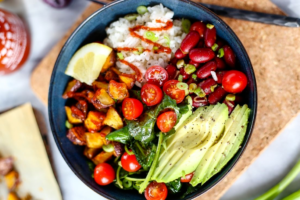






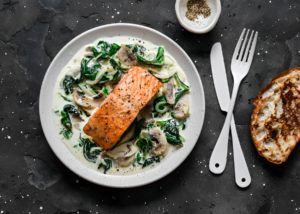

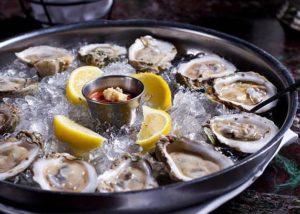





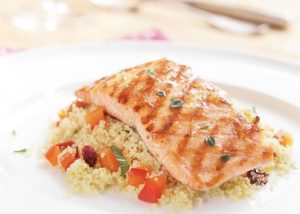







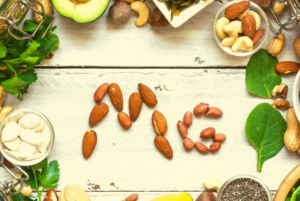










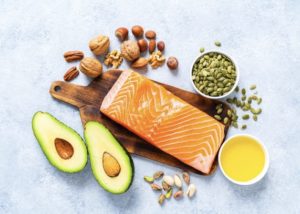












0 Comments